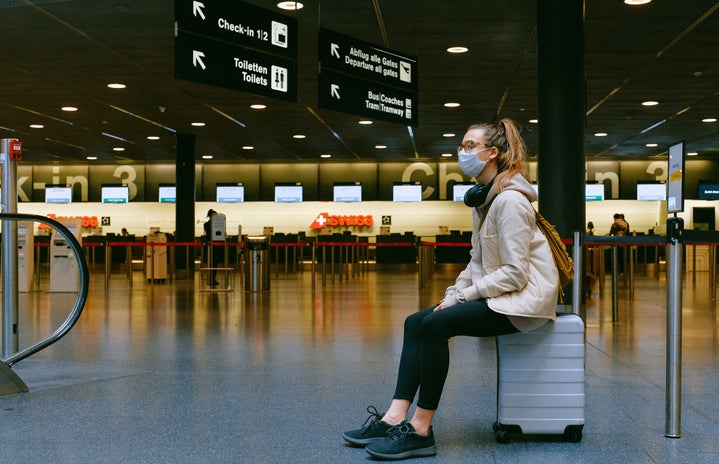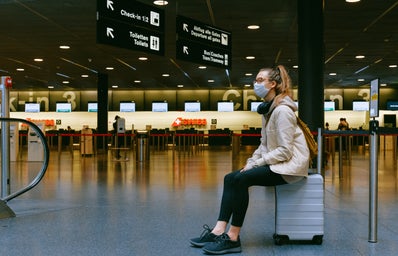Needless to say, 2020 has been a year to remember. There have been ups, downs, and disproportionally more downs than ups. Regardless, there have been notable catastrophes and successes alike.
The smell of polypropylene infiltrates my nostrils. My mom mailed me surgical masks she had at home. I don’t understand why. None of my professors are wearing masks. A few students are wearing masks, their eyes fighting to be seen above their mask and below their hood. I go to class, lab, and work, yet no one seems to be taking precautions. What is the novel virus everyone is talking about? The date is March 3rd, 2020. Days go by. My manager at work jokes that we should take the toppings section away from the fro-yo station because little kids stick their hands in it daily and could spread the virus. No one understands how the virus is transmitted or what health precautions to take. Seattle is hit hard. People across the country are watching Seattle’s battle with the virus on national news. It soon spreads to other parts of the country, quickly and mercilessly. On March 9th, the stock market falls to the worst single-day point drop in the history of the U.S. market. The week before, all in-person classes had been canceled. Professors now cancel finals. Everyone assumes this will be over after spring break. Now it’s May. By now, there are countless memes about the plight of 2020.
On May 30th, Space X launches the Falcon 9. Elon Musk is the founder and CEO of Space X and this launch is the first from the United States in nearly ten years. The launch is broadcast across news channels. People sit in their living rooms, surrounded by family. My dad chuckles as he watches the launch. The last time he watched anything like this was the Apollo 11 landing on the moon in 1969, when he was nine years old. He had a black-and-white TV back then and him and my grandma start to reminisce about seemingly forgotten memories. I can tell that watching the Falcon 9 launch brings him joy and it’s a short-lived relief from everything else in the world. We watch with wonder as the Falcon 9 takes off. Success!
A few days later, protests for the Black Lives Matter movement has gained widespread support, and people are hopeful that civil rights’ changes are within reach. On May 25th, George Floyd had been killed by police officers in Minneapolis, Minnesota. The world listens with hurt and anger, and the BIPOC community mourns fiercely. His death marks the beginning of a worldwide movement that fights for change. Statistically, black Americans are 3x more likely to be killed by the police than their white counterparts. People are frustrated. The racial climate in America has not improved over the years. Professor Megan Ming Francis says “…we haven’t properly addressed our long history of racial terror…” and gives great insight into the problem, her experiences, and more. Civil rights has continuously been put on the back-burner and everyone has had enough.
Later, in August, Japan creates the world’s first flying car. The car, SD-03, finishes a successful test drive on August 25th, 2020. SkyDrive Inc., the company who created SD-03, has been working on its development since 2014. Along with the flying car, Japan has also created “real-life transformers,” which are essentially enormous robots operated by a human who lays inside the “transformer.”
The often unspoken positives of the pandemic include being able to spend quality time with family (not everyone has this luxury, but for many), taking time to work on hobbies, and figuring out what is truly important to each individual. Many college students and working professionals aren’t able to see their family often, but since the start of the stay-at-home order, many people have come home to their families to quarantine together. Although it may cause anxiety among many people to feel like life is currently at a stand-still, it raises many questions about our society. Why are we normally so focused on our own success that we can’t even give our loved ones a moment of our time? What truly brings us happiness in life? How can we prioritize the health of underserved communities?
Wildfires. They devastate the world annually and continue to become progressively worse. Ravaging fires rage from Southern California to Washington state; a dire consequence of climate change. I drive through Seattle and wish I had a camera. The shock factor is completely there. The sky is grey and weeps ash. The space needle isn’t even visible from downtown. The air quality ratings are off the charts with readings in the “hazardous” zone. As I continue to drive, I know I will forever remember the year 2020 this way: ash thickening the air and I-5 remaining desolate and empty. A stark reminder of the bustle and way of life that was far too fragile.
In October, Dr. Emmanuelle Charpentier and Dr. Jennifer Doudna are awarded the 2020 Nobel Peace Prize in Chemistry for their work developing the CRISPR-Cas9 gene editing. The Cas9 protein is part of the innate immunity in bacteria and is able to identify and “cut” specific segments of DNA with the aid of tracrRNA and crRNA. The two researchers were able to engineer a guide RNA, “sgRNA.” This innovation means DNA sequences that contain mutants will be “cut” and made non-functional. It also means favourable DNA sequences can be repeated. This makes all the difference in hereditary diseases such as sickle cell anemia, cystic fibrosis, and Huntington’s disease.
All in all, as 2020 nears a close, most people can’t wait to see it go. While it was a year filled with “worsts,” there were many important lessons and events throughout the year, hidden beneath the chaos. As people prepare for the holidays and begin their New Years’ resolutions, everyone is hoping to never see another year like this.


